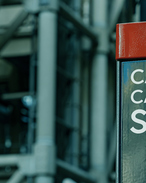This article is 8 years old. Images might not display.
While Chevron Corporation was one of the early movers investing in a carbon capture and storage facility for its Gorgon LNG project in Western Australia, now everyone from ExxonMobil, BHP Billiton, Aker Solutions, CSIRO, AGL Energy, various coal players and even Japan have dived into researching the techniques over the past year.
Industry feared the worse when the UK government in January backed away from a CCS project in Teesside in England's northwest having already axed a $2 billion fund last November earmarked for critical CCS projects in Scotland and Yorkshire.
Yet the momentum was maintained when, mid-last month, two US Democrat Senators, Heidi Heitkamp and Sheldon Whitehouse, introduced a bill to incentivise the development and use of carbon capture, utilisation and storage technologies and processes.
The senators see the legislation as a path forward for coal while spurring the adoption of low-carbon technologies that can transform carbon pollution into useable products, by extending tax credits that encourages investment in carbon capture, utilisation and sequestration.
On Tuesday a new report from consultancy Research and Markets forecast the global carbon capture, utilisation and storage technologies market to grow at a compound annual growth rate of about 25.8% over the next decade to reach roughly $US15.49 billion by 2025.
Now a team of researchers from Europe and the US led by the University of Cambridge's Centre for CCS director Professor Mike Bickle have been studying a natural reservoir in Utah where CO2 released from deeper formations has been trapped for about 100,000 years.
The finding also demonstrated that the relatively impermeable layer of cap rock that retains the CO2 could resist corrosion from CO2-saturated water for at least 10,000 years.
Although the CO2 will be injected as a dense fluid as part of its geological storage, it is still less dense than the brines originally filling the pores in the reservoir sandstones, and will rise until trapped by the cap rocks.
Bickle said that while CCS was seen as essential technology if the world is to meet its climate change targets, a major obstacle to the implementation of CCS was the uncertainty over the long-term fate of the CO2 which impacts regulation, insurance, and who assumes the responsibility for maintaining CO2 storage sites.
"Our study demonstrates that geological carbon storage can be safe and predictable over many hundreds of thousands of years," Bickle said.
The team, which included researchers from Germany, Netherlands and the US as well as Britain, studied the corrosion of the minerals comprising the rock by the acidic carbonated water, and how this has affected the ability of the cap rock to act as an effective trap over geological periods of time.
Their analysis studied the mineralogy and geochemistry of cap rock and included bombarding samples of the rock with neutrons at a facility in Germany to better understand any changes that may have occurred in the pore structure and permeability of the cap rock.
They found that the CO2 had very little impact on corrosion of the minerals in the cap rock, with corrosion limited to a layer only 7cm thick - considerably less than the amount of corrosion predicted in some earlier studies, which suggested that this layer might be many metres thick.
The researchers also used computer simulations, calibrated with data collected from the rock samples, to show that this layer took at least 100,000 years to form, an age consistent with how long the site is known to have contained CO2.
They say their new research demonstrates that the natural resistance of the cap rock minerals to the acidic carbonated waters makes burying CO2 underground a far more predictable and secure process than previously estimated.
"With careful evaluation, burying carbon dioxide underground will prove very much safer than emitting CO2 directly to the atmosphere," Bickle said.






















